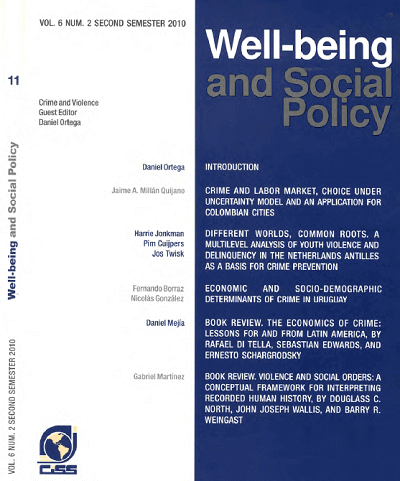
This study estimates a panel data model to analyze the economic and socio-demographic determinants of crime in Uruguay across the 19 Uruguayan departments in the period 1986-2006.
This research has two components: i) to present a systematic analysis of the Uruguayan crime data and socio-economic and demographic characteristics of the population, and ii) to evaluate the empirical significance in Uruguay of the economic crime model developed by Becker (1968) and Ehrlich (1973) with the objective to explain why the crime rate varíes over time and across departments.
We estimate a dynamic panel data model to identify the socio-economic and demographic determinants of crime. In the estimation we include department fixed effects which captures non observable heterogeneity. Also, we study the hypothesis of crime inertia by including the lagged crime rate as exploratory variable. The generalized method of moment methodology allows us to control for endogeneity in some explicative variables and for the existence of correlated measurement error in crime statistics.
Our results are as follow: i) the socio-economic factors have no significant effect on the crime rate; ii) an increase in the crime rate tends to perpetuate overtime; iii) the population density and urbanization rate positively affects crime; and iv) the deterrent factors are relevant to reduce crime against property.
